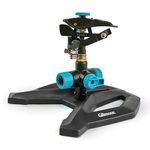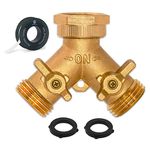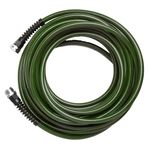
If you haven’t noticed, there are suddenly more hydrangeas (Hydrangea spp. and cvs., Zones 3–9) for northern gardeners than ever before. If you’ve become frustrated with getting a hydrangea to bloom in the Northeast, you have the wrong species. It’s easy to become confused with hydrangeas, as most are sold under their variety names. Also, many of the showiest (the blue and pink varieties) happen to be the least winter-hardy hydrangeas in the Northeast—or at least their flower buds are.
Best cold-hardy hydrangeas
If you’re just getting foliage and no flowers most of the time, the problem most likely is winterkill. This happens when you have a species that blooms on old wood. Any of the named varieties of bigleaf hydrangea (Hydrangea macrophylla, Zones 5–9) are notoriously shy bloomers in the Northeast, as this is a species that forms its flower buds in the previous year. The flower buds then may be killed off with the freezing and thawing cycles in late winter and early spring. The good news is that in the past 20 years, much progress has been made with the species that form flower buds on new growth—panicle hydrangea (Hydrangea paniculata, Zones 3–9) and smooth hydrangea (Hydrangea arborescens, Zones 3–9). These plants are hardier, and you’ll have an easier time with their care and pruning, especially in areas with colder winters. Here are some of the best cultivars of these two species to look out for.

Panicle hydrangeas are cold hardy and drought tolerant
Panicle hydrangeas are not only the easiest hydrangeas to grow, but some newer varieties are also drought tolerant and quick growing. They can also range from dwarf varieties suitable for containers or entrance plantings to tall, single-trunked specimens. Limelight™ (Hydrangea paniculata ‘Zwijnenburg’, Zones 3–9) is hardy to Zone 3, grows 8 feet tall, and has flowers that start off green and fade to white, then red in fall. Candelabra™ (Hydrangea paniculata ‘Hpopr013’, Zones 3–9) is unique due to its larger flowers, which are white and fade to pink. They are also slightly fragrant and able to withstand drought and wilting. Little Hottie® (Hydrangea paniculata ‘Bailpanone’, Zones 3–9) offers the look of a smooth hydrangea with greater cold hardiness. It is lower growing, maxing out at 4 feet tall, with cloudlike heads of white flowers on stiff stems.

For a cold-hardy variety with bigger blooms, go with smooth hydrangeas
If you’re looking for classic mophead displays or more color choices, it’s hard to beat smooth hydrangea cultivars, of which there are many today to choose from. Favorites include the now classic ‘Annabelle’ (Hydrangea arborescens ‘Annabelle’, Zones 3–9) or Incrediball® (Hydrangea arborescens ‘Abetwo’, Zones 3–9) varieties, but even these have been improved and expanded upon by plant breeders. Incrediball® Blush (Hydrangea arborescens ‘NCHA4’, Zones 3–9) has smaller florets with a raspberry-pink color. Lacecap lovers will be overjoyed with the performance of Invincibelle® Spirit (Hydrangea arborescens ‘NCHA1’, Zones 3–9) and the gigantic blooms of ‘Haas’ Halo’ (Hydrangea arborescens ‘Haas’ Halo’, Zones 3–9), which has the added benefit of 12-inch-wide flower heads on stems that don’t fall over.
How to prune panicle and smooth hydrangeas
Both panicle and smooth hydrangeas can, and should be, pruned hard in early spring just as new growth is emerging. Smooth hydrangeas should be pruned back to 6- to 8-inch-tall stems for the largest blooms, while panicle hydrangeas can be either trimmed lightly for a larger plant or cut back to the most substantial new shoots for maximum effect. If panicle hydrangeas are pruned hard, it can stimulate new growth and often larger blooms, but if they’re allowed to branch out, it often results in many smaller blooms.
For more on how to prune different types of hydrangeas, check out Pruning Hydrangeas.

Common hydrangea pests
Leaftiers and leafrollers
While few pests bother hydrangeas in the Northeast, a common problem is leaves that appear to be sewn together in the late spring. This unique practice is the craft of the tiny larvae of an insect group known as the hydrangea leaftiers. The larvae of these moths produce a silken thread that essentially glues a pair of leaves together, usually in mid-May.
Similar damage can be caused by leafrollers, who typically roll a single leaf rather than folding two together.
How to manage leaftiers and leafrollers
Rarely do these insect larvae affect flower bud formation, as the damage occurs early in the season. However, it can cause unsightly leaf damage. These pests’ lives are short. You can either choose to leave them alone or gently pull apart the two leaves without tearing them, find the tiny green worm inside, and destroy it.
For more hydrangea recommendations, check out:
And for more Northeast regional reports, click here.
Matt Mattus is the author of two books: Mastering the Art of Flower Gardening and Mastering the Art of Vegetable Gardening. He gardens in Worcester, Massachusetts.
Fine Gardening Recommended Products

Gilmour 811673-1001 Sprinkler

Morvat Heavy Duty Brass Y-Valve

Water Right PSH-100-MG-1PKRS 400 Series, 100-Foot, Olive Green


















Comments
I read this article! I hope you will continue to have such articles to share with everyone! thank you!
thank you for sharing with us
hellodear.in
teatv.ltd
Log in or create an account to post a comment.
Sign up Log in